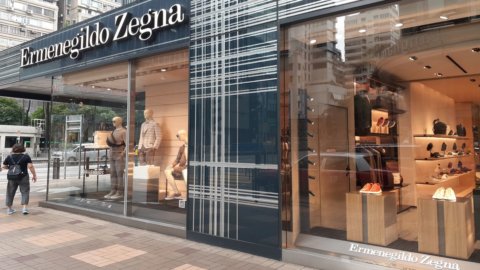“We could have been alone for at least another hundred years. But it's the right time to change: the world of luxury has really become very challenging". Ermenegildo Zegna, heir to one of the historic brands of Made in Italy, created in Trivero at the foot of the splendid oasis of the Biella Alps that bears the family name, thus comments on the turning point of the group, which promises to profoundly mark the transformation of the sector. Let's see why:
- Ermenegildo Zegna, pursued for years as possible prey, will go public on Wall Street through the merger of Zegna with Investindustrial acquisition Corp, the Spac, the vehicle company launched by Andrea Bonomi at the end of 2020 to bring Italian companies to the US and of which the former banker Sergio Ermotti is president. The stock will be traded on the Nyse from the end of November. The company will have an expected initial value of 3,2 billion dollars, with an expected market capitalization of 2,5 billion. Overall, 880 million dollars (750 million euros at today's exchange rates) are involved in the operation: 403 million from Spac's endowment, 250 million from other investors and a further 225 million from Investindustrial which will thus secure 11% of society. The Zegna family, ie Gildo (member of the Juventus board of directors), his cousin Paolo, his sister Anna and his two sons Edoardo and Angelo, will control 62%. The next CEO? “The right thing is for him to be one of the family – Gildo replied to the Financial Times – but he will have to deserve it”.
- The name of the Zegna consortium partners, once again forerunners of Made in Italy (the Biellese were the first to open in 1991 in Tien An Men in the heart of Beijing) is for the moment top secret. But it is very probable that in the consortium there is room for the Prada group. Gildo Zegna, CEO of the group, and Bertelli have jointly taken over Filatura Biagioli Modesto. The plan envisages the enhancement of the industrial companies of Zegna: in addition to Biagioli Modesto, Bonotto, Tessitura Ubertino, Cappellificio Cervo, Dondi and others.
- But, above all, as a possible prey, Zegna equips itself with the financial means to act as a hunter, a season already inaugurated in 2018 with the purchase of Thom Browne, the US brand that has since doubled its sales. But it's not just about shopping for brands. Zegna, which employs 6 people, will continue to take care of manufacturing on behalf of Gucci, Tom Ford and Chanel.
- The "formula Z" introduces a significant novelty in the field of made in Italy in a panorama distorted by the effects of the pandemic. Sales to traveling tourists have dwindled to a flicker (especially the Chinese), chasing customers online requires heavy investments, especially in logistics as well as in brand enhancement. It is no coincidence that the hunt for the purchase by LVMH, the flagship of French luxury, has picked up speed which, through the private Catterton, has just concluded the purchase of 60% of Etro. After conquering, again through Catterton, control of the German Birkenstock and 10% of Tod's, a sort of deposit for the next purchase. For now, Ferragamo is resisting French pressure (Kering is also in the fray), while Moncler is offering itself, with caution, as an aggregator brand.
- The big challenge, however, concerns the fate of Giorgio Armani. Reuters, with the confirmation of five sources, spoke in recent days of an approach by John Elkann with the divine Giorgio to build a luxury conglomerate potentially anchored to Ferrari. The rumor was denied. At the moment. But there are many signs in favor of a negotiation that could give life to a third largest in the world of luxury (not counting the Italian-French company EssilorLuxottica). In reality, however, caution is a must, both for governance in the short term and for future prospects, when it comes to managing the designer's creative legacy. It is said that the Spac formula does not lead the way.





